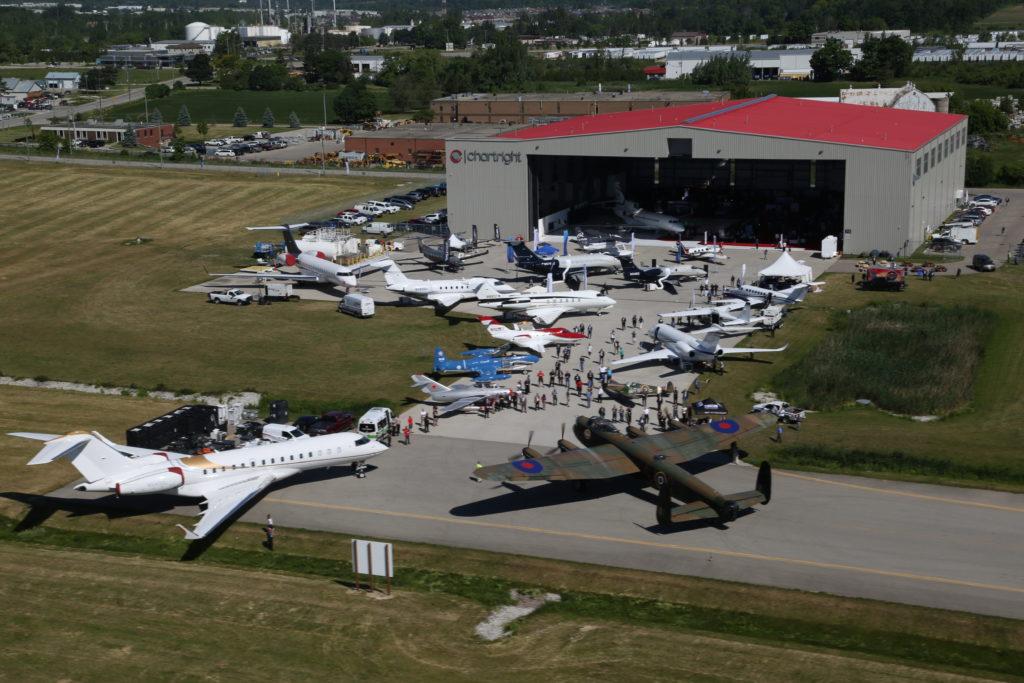Estimated reading time 5 minutes, 52 seconds.
For the last seven-and-a-half years, JETNET iQ has been monitoring the vital signs of business aviation worldwide.

In all that time, the forecast has never been so sunny or the outlook so optimistic as it is today.
That was the key message delivered by Rolland Vincent at the 2018 Canadian Business Aviation Association (CBAA) convention in Kitchener-Waterloo, Ont., on June 13.
A business aviation analyst with more than 35 years of industry experience, Vincent created JETNET iQ to deliver independent quarterly market intelligence to business aviation stakeholders. Since its inception in 2011, the service has surveyed thousands of aircraft owners and operators in 129 countries, including Canada.
“If there is one thing to remember once I get off the podium, it’s that the market is very, very good,” he told delegates at the beginning of his presentation, which examined industry supply and demand, key market indicators, owner/operator sentiment, and the delivery forecast for business aircraft.

“We’re looking at positive quarter-by-quarter annualized numbers. The U.S., Europe and Canada together represent about 76 or 77 per cent of the business aircraft fleet worldwide. The good news is there is lots of growth because this is an underdeveloped market. [Some] countries and regions are only just starting to discover business aviation.”
Vincent said factors that have dragged down the market in recent years, such as an excess of pre-owned business jets and turboprops for sale, appear to be improving.
“We’ve been seeing a consistent decline in the number of pre-owned business jets and turboprops. It’s lower every year; in fact, last year we had quite a dip down. That said, 2018 may be a bit slower since there’s not as much good inventory for sale.
“Right now, it’s hard to find a good pre-owned aircraft. There’s nothing out there.”
Currently, 9.4 per cent of the world’s business jet fleet is for sale, while 6.9 per cent of the business turboprop fleet is available for purchase.
JETNET iQ pays close attention to the pre-owned market because it is very active and numbers can be tracked on a daily basis, versus waiting for quarterly OEM reports on new sales.
Speaking of new aircraft sales, Vincent reported a shadow on the horizon in that backlogs are generally declining across the “big five” manufacturers: Bombardier, Dassault Falcon, Embraer, Gulfstream and Textron.
However, deliveries are expected to stay one to two per cent higher in 2018 versus the previous year.
Market Insights
A total of 65 Canadian business aircraft owners and operators responded to recent JETNET iQ surveys, generating a unique snapshot of the national market.
For instance, Canadian operators reported a higher flight hour utilization profile than those in the U.S. or Europe. On average, each aircraft flew 454 hours during the survey period, while U.S. operators reported 326 hours, and those in Europe 354 hours.
[Worldwide, the latest data from JETNET iQ’s first quarter 2018 survey reveals that 45 per cent of business aircraft flew 250 hours per year or less.]This country also has a higher percentage of turboprop business aircraft compared to the U.S. and Europe, with multi-engine aircraft in that category representing 23.6 per cent of the Canadian fleet, and single-engine turboprops coming in at 21.7 per cent.
The very light jet segment is non-existent in Canada, whereas it represents 6.4 per cent and 6.2 per cent of the U.S. and European markets, respectively.
Vincent said the market for small aircraft under 20,000 pounds maximum takeoff weight (MTOW) still has not picked up.
“This affects the Embraer Phenom, Lear, Citation, HondaJet,” he said. “We’re waiting for that market to rebound. We’re seeing some activity there, but legacy aircraft seem to be struggling. Turboprops have done quite well.”
While the rate of new orders coming into factories has not recovered as much as analysts would like to see, Vincent said eight per cent of respondents worldwide said they are at least 60 per cent likely to buy a new aircraft over the next 12 months.
“That’s a bit low; we like to see it around 10 per cent [of respondents]. However, we’ve been in an oversupplied market for some time now and residual values have plummeted.”
He also said the current “unprecedented and shocking” political environment has undoubtedly had an effect.
With many older aircraft not flying at all, JETNET iQ is predicting a “retirement wave,” as owners trade up to newer aircraft with more modern avionics packages that comply with coming regulatory requirements.
Among other factors, buyers reportedly ranked mission profile, cabin size and comfort, price, efficiency, performance, value, avionics, appearance and fleet commonality as key influencers when shopping for an aircraft.
JETNET iQ found that Canadian operators ranked Gulfstream as the top brand by reputation, followed closely by Bombardier and then Dassault Falcon.








